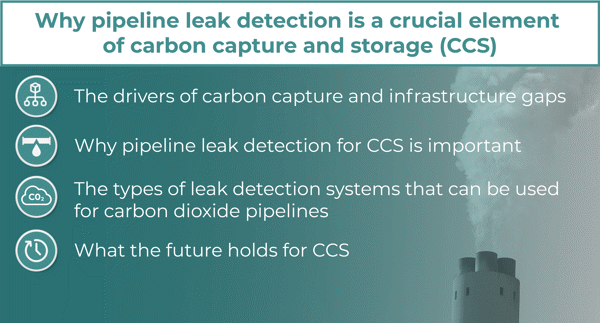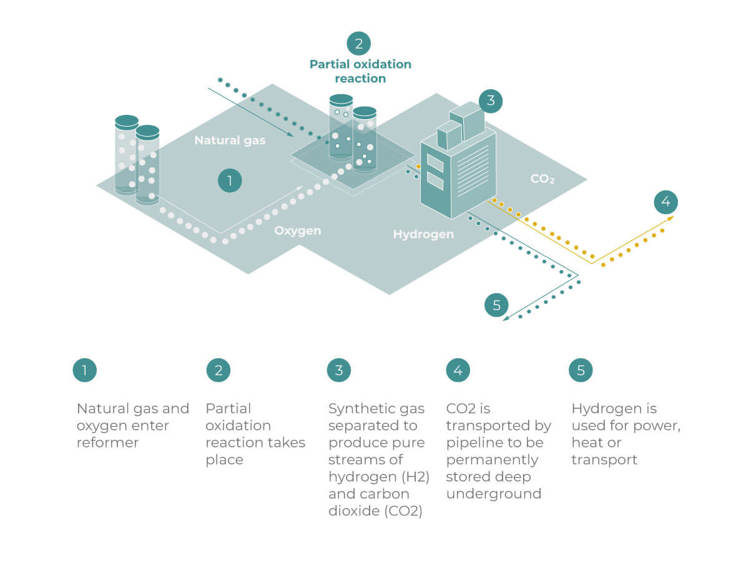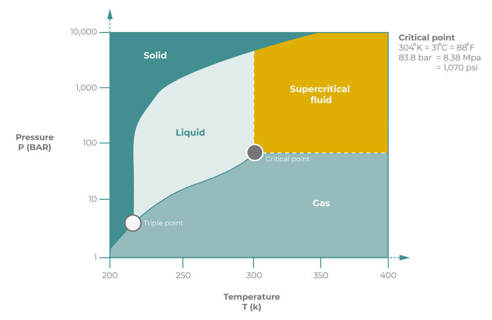Carbon capture and storage to help address climate change
Climate change is one of the issues at the forefront of most government agendas. Last year, at COP26, countries were asked to come forward with ambitious 2030 reduction targets that align with meeting net zero emissions by the middle of the century (UK COP)1. Governments have agreed to keep global warming well below 2 C and make efforts to keep it to 1.5 C. The energy industry will play an important role in helping to achieve these targets through decarbonization and energy transition.
Carbon capture and storage (CCS) is a way of reducing carbon emissions from industrial processes that would otherwise release large amounts of the greenhouse gas carbon dioxide (CO2) into the atmosphere.
The three core steps2 to CCS are:
- Capture - the CO2 is separated from other gases produced by industrial processes
- Transport - transported, often via pipelines or road transport and ships to a storage site
- Storage - the CO2 is injected into rock formations deep underground for permanent storage
Pipelines will play a crucial role in the future of CCS. Whether using existing pipelines that are repurposed or specially constructed networks, it’s vital to have leak detection on CO2 pipelines too. In this article we’ll discuss:
- The drivers of carbon capture and infrastructure gaps
- Why pipeline leak detection for CCS is important
- The types of leak detection systems that can be used for carbon dioxide pipelines
- What the future holds for CCS

The drivers of carbon capture and infrastructure gaps
CCS is becoming an important way for the global energy sector to help mitigate climate change and work towards the goals set out in COP26. 2021 saw a spike in the number of CCS projects in development, growing to a 111 Mtpa capacity, a 48% increase from 2020 (The Global CCS Institute)3. This increase in projects will have a direct correlation with the number of pipelines being required to transport CO2.
The CO2 that is captured from CCS can only be stored in sites that meet a specific set of geological characteristics and standards. Due to this fact, pipelines are an inevitable and vital component of an efficient CCS project as in some cases, the CO2 may need to travel long distances to reach the storage site.
The hydrogen economy is another key driver of CCS projects, with energy companies wanting to store the CO2 that arises from blue hydrogen, the lowest cost means of clean hydrogen production. CCS goes hand in hand with the hydrogen economy, key for energy transition as it’s a vital part of the process to meet net zero emissions.

Figure 1: Hydrogen production using CCS
Despite the growth in the number of projects in development for CCS, there remains a gap in the amount of infrastructure required to meet the goals set for 2050. For example, North America’s CO2 pipeline network will need to grow from around 8,000 km today to 43,000 km3.
The material for CCS pipelines also needs to be carefully considered. CO2 is corrosive if contaminated with just even a small amount of water, reacting to form carbonic acid. This means the pipelines used to transport CO2 need to be manufactured and maintained to a higher standard. It also means monitoring the purity of the CO2 is crucial.
All these factors drive the need for having leak detection systems (LDS) to ensure carbon dioxide pipelines are being run safely.
Why pipeline leak detection for CCS is important
Safety is a key concern for CCS pipelines. The CO2 is either handled as a gas, or a supercritical phase fluid (sCO2) at extremely high pressure. Due to the higher pressure involved in transporting the CO2, explosive decompression of a CCS pipeline releases more gas, much faster than the equivalent explosion in a natural gas pipeline.

Figure 2: CO2 as a supercritical phase fluid
The effects of a leak or rupture on a CO2 pipeline can be catastrophic, both to people and the environment. Although CO2 might seem harmless because it’s something people breathe out, in high concentrations it is an asphyxiant. A leak or rupture of a CCS project pipeline is also counterproductive, releasing the greenhouse gas back into the atmosphere.
Key effects of a leak or rupture of a CCS pipeline:
- Groundwater contamination for onshore sections
- Threat to life
- Greenhouse gasses released back into atmosphere
- Impact on the environment
- Hazardous to health4
Given the number of projects in development and the large scale plans for CCS, pipeline leak detection will play a vital role in detecting and locating leaks in the pipeline as quickly and efficiently as possible.
Leak detection systems for carbon dioxide pipelines
The scale of CCS needed to meet targets means investment in both onshore and offshore CO2 pipelines is required. Due to the human and environmental impacts of CO2, it is crucial to have an effective leak detection system to monitor the pipelines. There are a variety of methods that can be used to work with both CO2 as a gas and as a supercritical phase fluid.
Atmos Pipe uses the powerful sequential probability ratio test (SPRT) method, which is effective for both gas and liquid pipelines. Using flow and pressure data from control room systems like the supervisory control and data acquisition (SCADA), Atmos Pipe will detect leaks quickly and effectively.
Atmos Pipe can be finely tuned to meet the sensitivity requirements to detect a CO2 leak on large complex pipelines. This is important, since many larger scale CCS projects capture CO2 from industrial sources and transport the liquified substance to an offshore subsea location for permanent storage. When used offshore, Atmos Pipe is configured to take account of both the hydraulic profile of the pipeline and the seawater outside the pipeline.
Alternatively, the multi method Atmos Wave Flow may be used which includes both a volume balance and a negative pressure wave (NPW) algorithm.
What the future holds for CCS
CCS is becoming an increasingly important step of decarbonization for the energy industry. Truck and rail transportation methods simply aren’t going to handle the large quantities of CO2 for CCS to make a significant impact, so the need for pipelines to support these projects is inevitable. However, it is vital to consider the risks and uncertainties CCS carries.
Rolling out CCS projects on a large scale will increase the need for effective CO2 pipeline leak detection for the safe operation. The key drivers for CCS include the development of the hydrogen economy and reaching the 2050 climate targets set out in COP26. However, gaps in the infrastructure remain and therefore investment in improving the pipeline networks is likely to be required. It’s vital that the pipeline infrastructure is engineered to the right standard and that the purity of the CO2 is closely monitored to avoid the issues surrounding carbonic acid.
Technologies like Atmos Pipe and Atmos Wave Flow can help pipeline operators mitigate the risks associated with a CO2 leak, supporting pipeline operators by accurately detecting and locating pipeline leaks to ensure that they can be handled as quickly as possible.
Learn more about our leak detection solutions for carbon capture and storage.
References:
1 https://ukcop26.org/cop26-goals/
2 https://www.nationalgrid.com/stories/energy-explained/what-is-ccs-how-does-it-work
3 https://www.globalccsinstitute.com/resources/global-status-report/
4 https://www.hse.gov.uk/carboncapture/carbondioxide.htm
5https://www.equinor.com/en/magazine/uk-energy.html
6https://www.powermag.com/what-are-supercritical-co2-power-cycles/
